Best
AFFORDABLE VIOLA ROSIN
-
Overall: Light, medium-soft, gold-colored rosin
-
Best Feature: Pairs perfectly with Pirastro's Evah Pirazzi Gold strings
-
TedScore™: 8/10
Best
OVERALL
VIOLA ROSIN
-
Overall: Made from a blend of natural oils using a traditional hand-mixing and hand-pouring technique
-
Best Feature: Provides lock-tight bow-hand control
-
TedScore™: 10/10
Best
STUDENT VIOLA
ROSIN
-
Overall: Uses The Original Recipe Handed Down From Ladislav Kaplan
-
Best Feature: Easy One-Handed Use
-
TedScore™: 10/10
Picture the gentle, soothing sound of a viola filling the air, its warm tones creating a cozy atmosphere.
Whenever I draw my bow across the strings, the enchanting magic enchants me, and a touch of viola rosin helps create that beautiful sound.
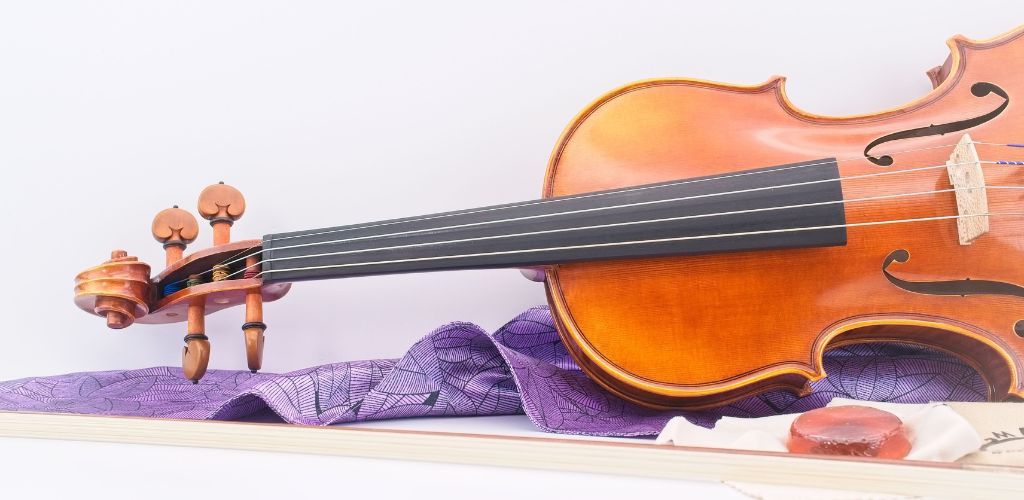
This small cake of joy might not seem unique, but it’s the secret ingredient that helps my bow grip the strings just right, allowing me to express myself fully in my music.
If you’re exploring the world of viola playing, experimenting with different rosins can be a fun adventure that helps you find the perfect match for your instrument and playing style.
Top Brands and Products
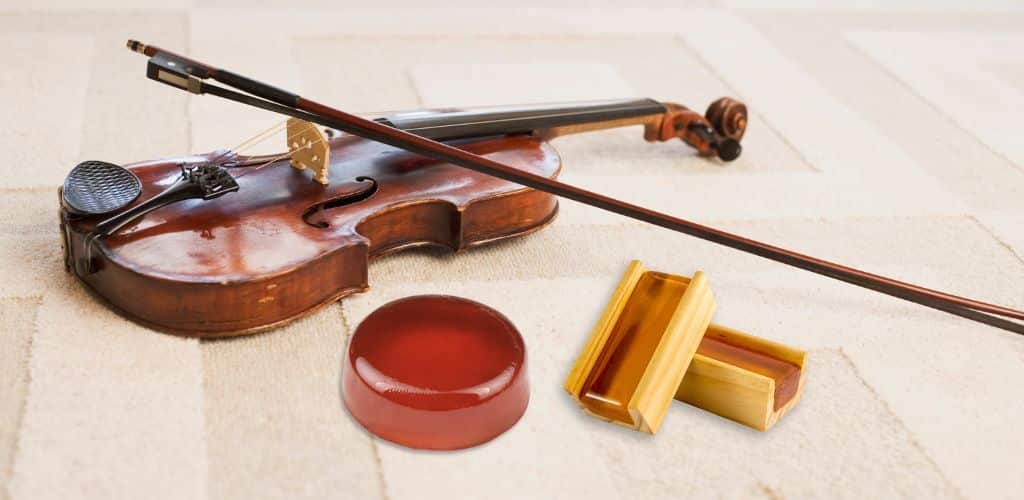
When it comes to solo playing on the viola, choosing the right rosin is crucial for achieving optimal sound quality and bow control.
The choice of viola rosin can significantly impact the tone and projection, making it essential for solo performances.
Hill Rosin
Hill Rosin is renowned for its balance of quality and affordability, the industry standard for many violists.
My experience tells me that once you switch to Hill, you’ll notice a significant level of improvement compared to using a generic rosin.
Hill Premium Viola Rosin
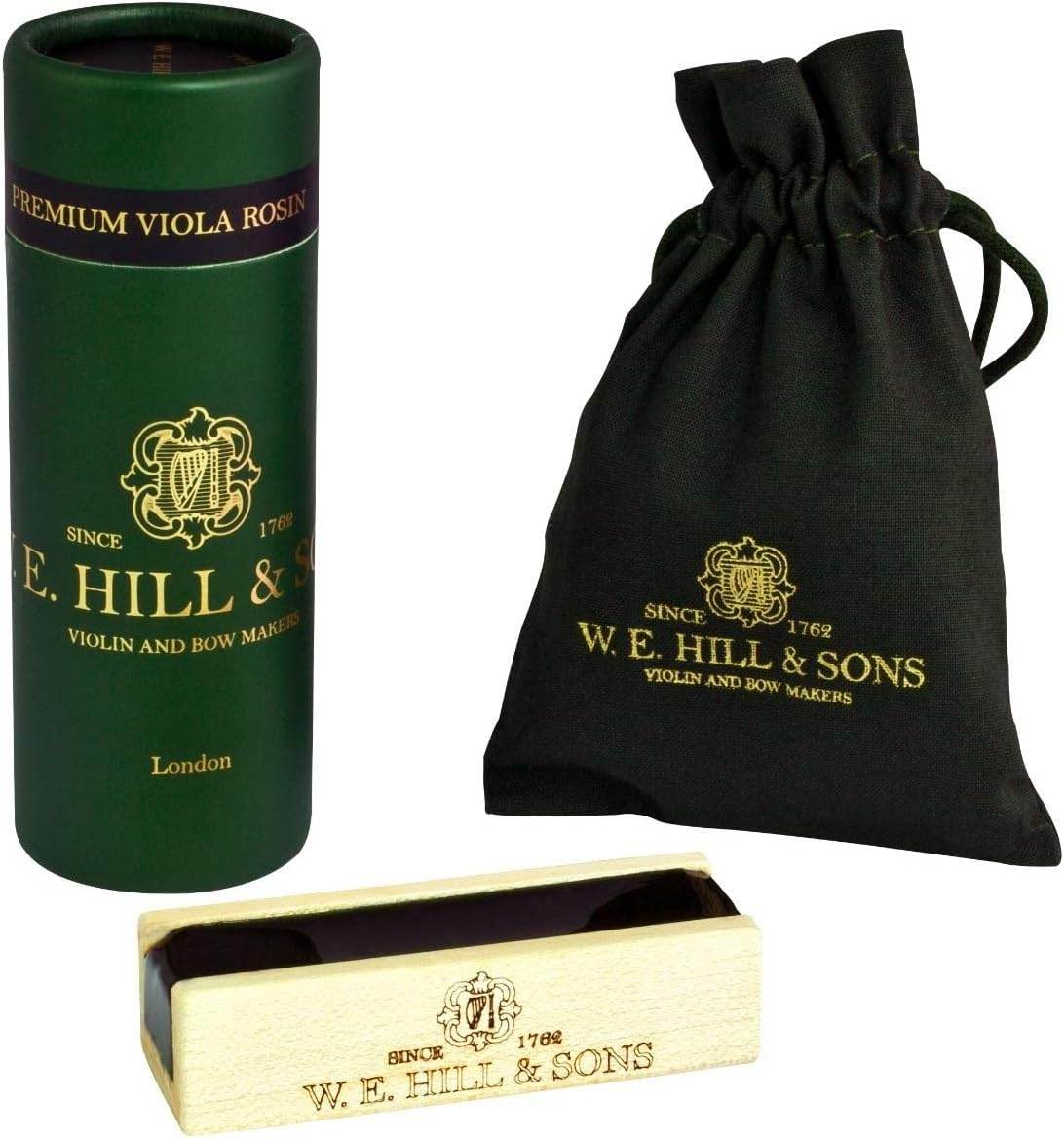
FEATURES: Made from a blend of natural oils using a traditional hand-mixing and hand-pouring technique
OTHER INFO: Appropriate for all weather and climates
- Provides lock-tight bow-hand control
- No cons at all!
When you click ‘Check Price’, you’ll see there are loads of great places to buy this item. Our personal favorite is Sweetwater for the US, and Thomann and Gear4Music for the UK & Europe.
They are the largest music retailers, with excellent customer service, competitive prices, really fast shipping, and the longest guarantees.
The professional musician who wrote this article combined many things,
from the product build, manufacturer’s reputation through to feedback
from other users, to create our famous TedScore™.
Pirastro Selection
Pirastro’s range, including the famous Evah Pirazzi rosin, caters to a broad spectrum of playing needs.
With my trusty Pirastro, I’ve found that my bow grips the strings just right—no more screeches, just pure musical delight!
Pirastro Evah Pirazzi Gold Rosin

FEATURES: Light, medium-soft, gold-colored rosin
OTHER INFO:Pairs perfectly with Pirastro's Evah Pirazzi Gold strings
- Produces warm, rich tone
- Minimal dust for cleaner instrument
- May require frequent reapplication for optimal performance
When you click ‘Check Price’, you’ll see there are loads of great places to buy this item. Our personal favorite is Sweetwater for the US, and Thomann and Gear4Music for the UK & Europe.
They are the largest music retailers, with excellent customer service, competitive prices, really fast shipping, and the longest guarantees.
The professional musician who wrote this article combined many things,
from the product build, manufacturer’s reputation through to feedback
from other users, to create our famous TedScore™.
Leatherwood Bespoke Options
The Leatherwood Bespoke Rosin offers a tailored experience for the discerning violist.
Each time I apply this rosin to my bow, the customized blend pays off in the tone, reflecting my artistic intentions with great finesse.
Leatherwood Bespoke Supple Viola Rosin
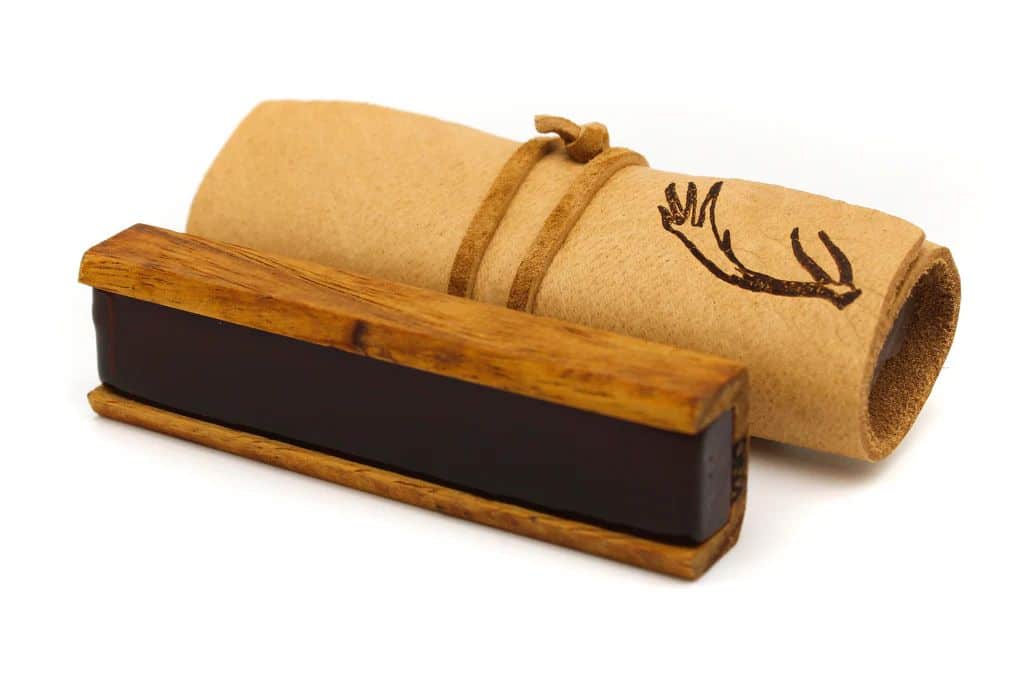
FEATURES: Handcrafted from premium ingredients
OTHER INFO: Customizable for different climates
- Low allergenic potential
- Higher price point
When you click ‘Check Price’, you’ll see there are loads of great places to buy this item. Our personal favorite is Sweetwater for the US, and Thomann and Gear4Music for the UK & Europe.
They are the largest music retailers, with excellent customer service, competitive prices, really fast shipping, and the longest guarantees.
The professional musician who wrote this article combined many things,
from the product build, manufacturer’s reputation through to feedback
from other users, to create our famous TedScore™.
Andrea and Kaplan Rosins
Andrea Rosin is acclaimed for enhancing the bow’s grip and delivering a complex tone.
Meanwhile, as I’ve discovered, D’Addario’s Kaplan Premium rosin maintains a solid reputation for facilitating a smooth, clean, consistent sound that’s invaluable for rehearsals and performances.
D'Addario's Kaplan Premium Rosin

FEATURES: Uses The Original Recipe Handed Down From Ladislav Kaplan
OTHER INFO: Easy One-Handed Use
D'Addario's Kaplan Premium Rosin
- Low Dust
- None!
When you click ‘Check Price’, you’ll see there are loads of great places to buy this item. Our personal favorite is Sweetwater for the US, and Thomann and Gear4Music for the UK & Europe.
They are the largest music retailers, with excellent customer service, competitive prices, really fast shipping, and the longest guarantees.
The professional musician who wrote this article combined many things,
from the product build, manufacturer’s reputation through to feedback
from other users, to create our famous TedScore™.
Choosing the Right
Viola Rosin

Selecting the perfect rosin for my viola can feel like a sweet mystery waiting to be unraveled.
It’s not just about getting the bow to glide; it’s about finding that companion that complements my strings to create a soulful symphony.
Importance of Quality
Quality rosin is crucial for a good grip and consistent tone production. The secret ingredient between my bow and strings brings out the robust sound of my viola, helping me weave musical tales with ease.
Preference and Playing Style
My style and preference determine my rosin choice, like picking the right shoes for a marathon. I look for a rosin that responds to my lightest touches and withstands my most potent expressions.
I lean towards a medium rosin for balanced playability and adaptability—I consider it the jack of all trades in my viola case.
Professional players might suggest that I experiment with premium rosins to explore subtle nuances in my sound.
Understanding Rosin
In the marvelous world of string instruments, rosin is akin to a magic potion. Let me explain what makes rosin tick and why it’s pivotal for bowing practices.
History and Composition

Sometimes, it’s sweet to know where things originated. Rosin, which many also call colophony, has a fascinating legacy. It’s derived chiefly from tree sap, historically tapped from various coniferous trees.
Here’s a quick breakdown of what you’d typically find in rosin:
Primary Constituent: Refined tree sap or resin
Common Additives: Sometimes beeswax or metals for altering friction
Rosin’s journey begins long before it meets the bow, often starting its life from the likes of pine trees.

Types and Characteristics
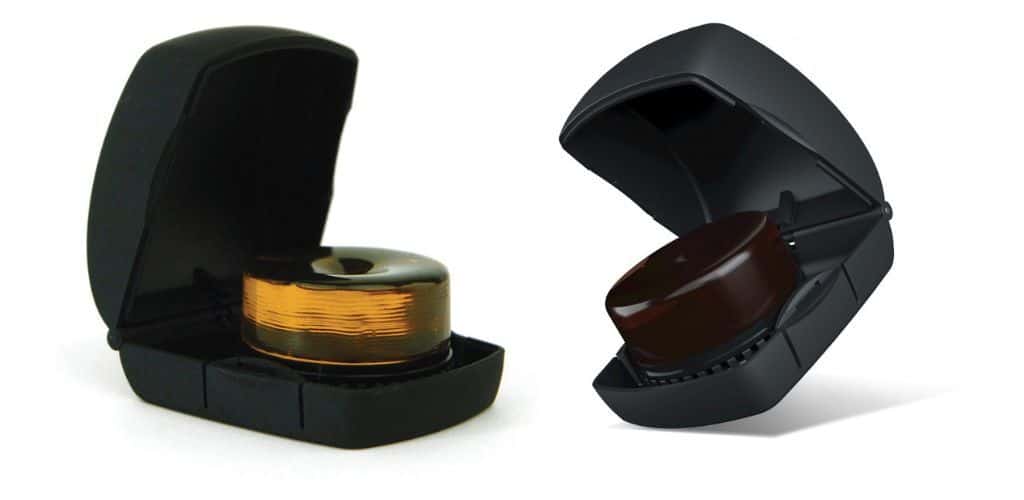
Not all rosin is created equal, you see. There are different types, and they come with their unique characteristics—here are a couple you might encounter:
Dark Rosin: Typically softer, stickier, and favored in more humid climates
Light Rosin: Hard rosin, offering a firmer grip, suitable for drier conditions
My advice? Consider your instruments and local climate when picking your rosin. The type of rosin you choose profoundly influences the playability and sound of your viola.
Application and Care
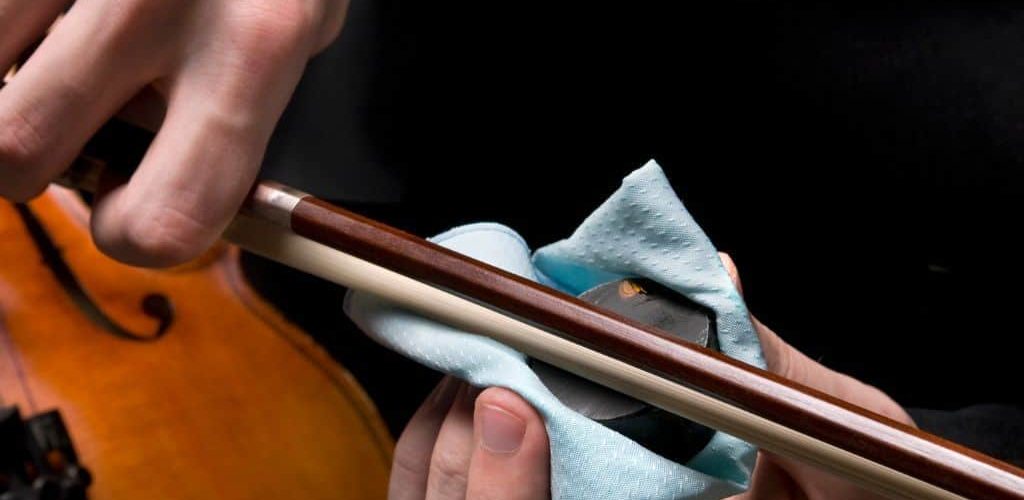
When I think about applying rosin to my viola bow, it’s like preparing a cake—each layer adds to the delicious sound I produce.
Proper care and application are essential to prevent damage from climate change and ensure my bow performs at its best.
Applying Rosin to Viola Bows
I ensure my bow hair is tight before applying the rosin, starting from the frog and moving to the tip with moderate pressure to spread the rosin evenly.
The rosin should coat the bow hair for a good grip on the strings and clear sound.
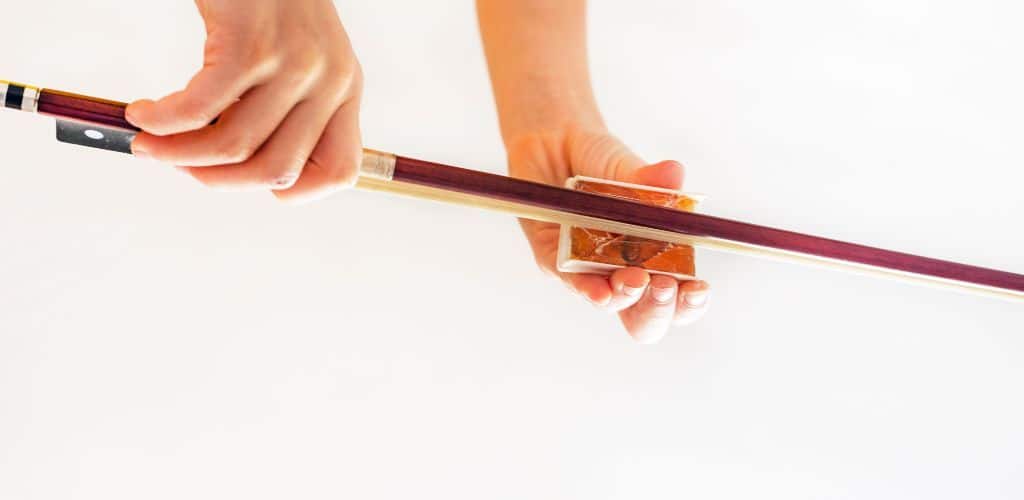
I recommend to usually apply rosin with four or five strokes on string properly. I avoid rosining in very hot or cold conditions to protect my bow, and I try to keep the humidity stable to keep my bow hair in good shape.
Viola Rosin:
Final Thoughts
Finding the right viola rosin is like finding the perfect spice for a favorite recipe. It’s the secret ingredient that can make a big difference in how my music sounds!
Using the right rosin makes my bow strokes smooth and confident. I’ve learned to use rosin sparingly and apply it carefully, and applying it every few playing sessions keeps my sound consistent.
Remember, every violist prefers rosin, and it’s a personal choice, just like the viola. Happy music-making, and may your rosin never be too dark or sticky!
But wait, there’s still more…
Check out this article featuring the top 5 violas for beginners.
FAQ's
Viola rosin is a solid resin compound applied to the bow hair of a viola player’ bow. It helps create friction between the bow hair and the viola’s strings, allowing for a clearer and more resonant sound production.
The best rosin for a viola can vary depending on personal preference, playing style, and the specific characteristics of the instrument. Some popular options include Pirastro Evah Pirazzi Gold Rosin, Andrea Solo Viola Rosin, and Jade L’Opera Rosin.
While there are rosins marketed specifically for violin or viola, in practice, there is often no significant difference between the two. Many violin rosins can be used interchangeably with viola rosins, although some violists may prefer rosins formulated to enhance the lower tones of the viola.
Viola rosin is not intended for consumption, and tasting it is not recommended. Rosin is a solid resin compound used to create friction between the bow hair and the strings of a viola, and it has a bitter taste. If accidentally ingested, it can cause discomfort and should be avoided.











While the ‘Understanding Rosin’ section does a splendid job at breaking down the types and characteristics of rosin, I believe a deeper dive into the impact of climate conditions on rosin selection could greatly benefit readers. Having played in various climates, I’ve noticed significant changes in how different rosins respond. For instance, a harder rosin that’s ideal in humid environments might not provide the same quality of friction in drier areas, affecting the overall sound production. Perhaps, Anna Downes, a supplementary section addressing this aspect could enrich the article’s comprehensiveness.
i didn’t no there was so much to think about for viola rosin. gonna show this to my music teacher tomorrow, maybe they can help me pick something from the list.
Gotta say, I’ve used both Andrea and Kaplan rosins in my time, and there seems to be a huge difference not just in texture but in sound quality on the strings. Anyone else find that Andrea gives a more crisp sound compared to Kaplan’s warmth?Or is it just me adjusting my play style unknowingly?
I’m always on the lookout for high-quality musical accessories for my students and the section on ‘Top Brands and Products’ caught my eye. Do you think the options listed, like Hill Rosin and Pirastro, are suitable for beginners, or should I look for something more tailored to new learners? Thanks for the guidance, Anna Downes!
ElizaSings, those brands are great for all levels! My niece started with Pirastro and it worked out perfect for her.